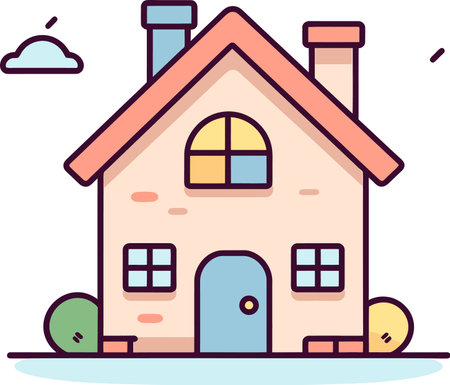Introduction: Navigating Marketing Methods in Real Estate
In today’s ever-evolving real estate market, selling a home in the United States requires more than just sticking a “For Sale” sign in the front yard. Homeowners are faced with an exciting but sometimes overwhelming choice: Should you stick to tried-and-true traditional marketing methods, or embrace cutting-edge digital strategies? The landscape of home selling has shifted dramatically, shaped by changing buyer habits, technological innovation, and the rise of online platforms. Understanding these changes—and knowing how to leverage them—can make all the difference when it comes to getting your property noticed and sold for top dollar. As we explore the pros and cons of both traditional and digital marketing approaches, you’ll discover how choosing the right mix can empower your home sale journey and help you stand out in a competitive marketplace.
2. Traditional Marketing Methods: Tried-and-True Tactics
When it comes to selling homes in the U.S., traditional marketing methods remain a staple in many neighborhoods. These tangible, physical strategies have built-in familiarity and trust among American home sellers and buyers alike. Let’s break down the core tools—yard signs, printed flyers, open houses, and direct mail—to see how they function, what they offer, and where they might fall short in today’s evolving market.
Breakdown of Core Traditional Tools
| Tool | Strengths | Limitations | Cultural Resonance |
|---|---|---|---|
| Yard Signs | Instant visibility; signals to neighbors; taps into local curiosity; low cost. | Limited reach outside neighborhood; easy to overlook by non-locals; subject to HOA rules. | A classic Americana icon—yard signs evoke community buzz and grassroots authenticity. |
| Printed Flyers & Brochures | Tangible takeaway for open house visitors; detailed property info; easy distribution at local spots. | Easily discarded; printing costs add up; not eco-friendly; hard to update information quickly. | Still seen as a thoughtful, personal touch—especially at open houses or coffee shops. |
| Open Houses | Direct engagement with potential buyers; creates urgency with “event” atmosphere; opportunity for personal connection. | Time-consuming prep; limited to those available during set hours; unpredictable turnout. | A weekend ritual in many U.S. suburbs—open houses are almost synonymous with the home-buying process. |
| Direct Mail (Postcards & Letters) | Targets specific neighborhoods or demographics; can be personalized; tactile presence stands out from digital noise. | May be perceived as junk mail; rising postage costs; response rates typically low without follow-up. | An old-school approach that still resonates with older homeowners and those who value personal outreach. |
The Enduring Appeal of Tangibility
Despite the rise of digital channels, these traditional tactics persist because they connect on a human level. The sight of a “For Sale” sign or the feel of a quality brochure can make an impression that pixels sometimes can’t match. For many Americans, these methods evoke nostalgia and trust—reminding them of times when real estate was all about handshakes and neighborly chats rather than clicks and algorithms.

3. Digital Marketing Methods: Modern Solutions for Today’s Sellers
Digital marketing has dramatically reshaped the landscape for home sellers in the U.S., offering more targeted, efficient, and visually compelling ways to reach potential buyers. Let’s explore how these modern solutions empower sellers and align with current American trends and consumer expectations.
Real Estate Listing Websites: Expanding Reach Nationwide
Platforms like Zillow, Realtor.com, and Redfin have become household names, providing unparalleled exposure for listings. Sellers can showcase their homes to millions of potential buyers far beyond their local market. These platforms offer robust search filters, high-resolution photo galleries, and detailed property data—features that today’s digitally-savvy buyers expect during their home search journey.
Social Media Advertising: Hyper-Targeted Engagement
With Americans spending a significant portion of their time on social media, platforms such as Facebook, Instagram, and even TikTok have emerged as powerful tools for home sellers. Social ads enable hyper-targeted campaigns based on demographics, location, interests, and behaviors. Eye-catching visuals and video tours can go viral, helping properties stand out in a crowded market while fostering immediate interaction through comments or direct messages.
Virtual Tours & 3D Walkthroughs: Immersive Experiences
The demand for virtual experiences has soared in recent years, especially among remote or out-of-state buyers. Interactive 3D tours and live video walkthroughs offer a true-to-life sense of space and flow—crucial factors for buyers who want more than static images. These digital tools allow sellers to provide open-house experiences 24/7, increasing convenience and engagement for today’s busy house-hunters.
Email Marketing: Personalized Communication
Email remains one of the most effective marketing channels in the U.S., particularly when combined with automation and personalization. Sellers (and their agents) use email blasts to alert potential buyers about new listings or price drops. Segmented lists ensure tailored content reaches motivated audiences, turning passive interest into active showings.
The Bottom Line: Meeting Modern Buyers Where They Are
As consumer behavior evolves with technology, digital marketing methods allow home sellers to stay ahead of the curve. By leveraging the reach of listing websites, the precision of social media advertising, the immersion of virtual tours, and the directness of email marketing, sellers can craft a compelling narrative for their homes—right where today’s buyers are looking.
4. Comparative Analysis: Reach, Cost, and Impact
When it comes to selling a home in the United States, understanding the tangible differences between traditional and digital marketing methods is crucial for maximizing both exposure and return on investment. This comparative analysis examines the effectiveness, costs, audience reach, and engagement of both approaches within the American housing market context.
Audience Reach
Traditional marketing—think yard signs, print ads in local newspapers, postcards, and open houses—tends to focus on reaching potential buyers within a specific geographic area. While this can be effective for targeting local buyers, it often lacks the expansive reach of digital channels. In contrast, digital marketing leverages platforms such as Zillow, Realtor.com, social media (Facebook, Instagram), email campaigns, and Google Ads to access a broader and more diverse audience—sometimes even out-of-state or international buyers who are considering relocation.
Cost Comparison
| Method | Typical Costs | Budget Flexibility |
|---|---|---|
| Traditional | $500–$5,000+ (print ads, signage, mailers) | Generally fixed costs; less scalable for small budgets |
| Digital | $100–$2,000+ (social media ads, listing fees) | Highly adjustable; pay-per-click or impression-based models allow for granular budget control |
Effectiveness & Engagement
The American housing market has seen a steady shift toward online property searches—according to the National Association of Realtors®, over 90% of homebuyers begin their search online. Digital marketing excels at facilitating immediate engagement through virtual tours, interactive content, instant messaging with agents, and targeted retargeting ads. Traditional methods rely more on physical presence and emotional appeal but may not generate as much data-driven insight or real-time feedback.
Impact Overview Table
| Traditional Marketing | Digital Marketing | |
|---|---|---|
| Audience Targeting | Broad/local; limited demographic targeting | Highly targeted by demographics, behaviors, interests |
| Speed of Results | Slower; dependent on publication cycles & in-person events | Faster; real-time analytics & instant outreach possible |
| User Engagement | Passive (readers/viewers); relies on proactive contact from buyers | Interactive (clicks, shares, inquiries); fosters two-way communication instantly |
| Measurability | Difficult to track ROI precisely; anecdotal feedback common | Easily tracked via analytics platforms; clear ROI measurement available |
| Cultural Relevance (U.S.) | Still valued in some regions/age groups; trusted by older demographics | Mainstream across all age groups; especially dominant among Millennials and Gen Z buyers |
The Bottom Line:
If youre selling your home in the U.S., blending both traditional and digital strategies can maximize your exposure and impact. However, digital marketing stands out for its ability to reach larger audiences quickly and efficiently—with measurable results that align with modern American homebuying trends.
5. Blending Both Worlds: Integrated Marketing Strategies
In today’s fast-evolving U.S. real estate landscape, the most successful home sellers aren’t choosing between traditional and digital marketing—they’re blending both to create powerful, integrated campaigns. By combining the trusted impact of print materials and in-person events with the reach and precision of online platforms, sellers can maximize their exposure and achieve stronger results.
The Advantages of Integration
When you merge traditional and digital marketing, you play to the strengths of each method. Classic tactics like direct mail postcards or open houses establish credibility and connect with buyers on a personal level. Meanwhile, digital strategies—think targeted social media ads, virtual tours, and email campaigns—expand your reach well beyond local neighborhoods, attracting tech-savvy buyers who start their search online.
Creative Approaches for Maximum Exposure
One creative approach is to use printed flyers with QR codes that link to immersive online home tours or dedicated listing websites. This bridges offline curiosity with online engagement, allowing potential buyers to instantly access more information from their smartphones. Another smart strategy is leveraging social media to promote live open house events, blending face-to-face interaction with digital buzz.
Building a Cohesive Brand Story
An integrated campaign ensures your messaging is consistent across all channels—from your yard sign to your Instagram feed. Using similar colors, fonts, and value propositions in both print and digital materials creates a memorable brand identity that resonates with buyers at every touchpoint. In a competitive market like the U.S., this cohesive presence helps your property stand out.
Stronger Results Through Data-Driven Decisions
Digital tools provide valuable data on what’s working—such as which ads generate leads or which virtual tours are most viewed—allowing you to fine-tune your strategy for even better results. By pairing this data with tried-and-true traditional methods, home sellers can optimize both their budget and their outcome, ensuring no opportunity slips through the cracks.
The synergy between traditional and digital marketing isn’t just a trend—it’s a winning formula for American home sellers seeking maximum exposure and measurable success.
6. Conclusion: Making the Right Choice for Your Home Sale
As you prepare to sell your home, choosing between traditional and digital marketing methods can feel overwhelming. Each approach offers unique advantages, and the best strategy often involves aligning these tools with your personal goals, budget, and what today’s American buyers expect. Let’s recap some key insights to guide your decision-making process.
Understanding Buyer Behavior in the U.S.
American homebuyers are increasingly tech-savvy, starting their search online and using mobile devices to browse listings and virtual tours. However, many still value personal connections with real estate agents and appreciate tangible marketing materials like flyers or open house events. Recognizing this blend of preferences is essential when mapping out your home sale strategy.
Key Takeaways from Traditional vs. Digital Marketing
- Traditional marketing (yard signs, print ads, open houses) builds trust and creates emotional connections but can be more costly and less targeted.
- Digital marketing (online listings, social media campaigns, email blasts) offers broader reach, precise targeting, and measurable results—often at a lower cost—but requires tech know-how or professional support.
Aligning Strategy with Your Goals & Budget
- If your priority is maximum exposure within a tight timeframe—and your target buyers are younger or relocating from other states—digital channels may deliver the best ROI.
- If you’re selling in a neighborhood where traditional word-of-mouth and in-person experiences matter most, complementing digital efforts with local print ads or open houses could make a meaningful difference.
The most effective marketing plans are rarely one-size-fits-all. Instead, they combine elements from both worlds for a holistic approach—think professionally staged photos shared online alongside neighborhood mailers or an engaging social media campaign that drives traffic to an open house event.
Your Next Steps
Assess what matters most to you: Is it speed, maximizing price, minimizing hassle, or reaching a specific type of buyer? Review your budget realistically—some digital options are surprisingly affordable—and consider partnering with a real estate agent who understands both traditional and digital landscapes. By staying attuned to evolving buyer expectations and leveraging the strengths of each method, you’ll be well positioned for a successful home sale in today’s dynamic American market.


